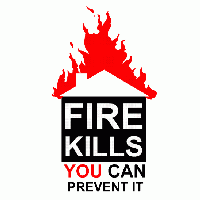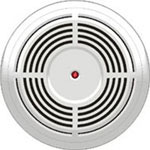Products and Services
Power Vacuum Sweeping for the best result
You'll be glad to know that we use the most up-to-date power vacuum sweeping systems to ensure the chimney cleaning is done thoroughly without mess or fuss.
We take pride in the cleanliness and efficiency of our service and can guarantee a speedy and technically proficient chimney cleaning service.
Solid fuel burning is becoming ever more popular due to soaring costs of other fuels, so chimney sweeps need to provide an expert chimney sweeping and cleaning service to customers who own appliances that burn fuel, such as: Open fires, Wood burning stoves, Multi-fuel stoves, Gas fires, Oil-fired boiler systems and LPG systems.
Sweeping Services
Over a period of time, soot builds up within your chimney lining. This causes a complete or partial blockage which reduces the draw and prevents the smoke from escaping out the top. This can lead to a lazy inefficient fire or smoke entering into your room or a fire starting high up in the chimney.
Whilst sweeping your chimney, fresh dust sheets are laid to protect all carpets and flooring, the hearth is then covered and taped. The brush and vacuum is then used to clean the flue and remaining soot is then cleaned away. A "Smoke Test" is undertaken to establish the flue is not leaking and that the chimney has an adequate draw and a certificate is issued.
Re-instating a fire place
If your fire place has not been used for some time, or you are new to the property, it's highly recommended that the chimney is swept and the integrity of the chimney lining is smoke tested. A fault in the lining could lead to smoke entering your property and igniting combustible material between floors etc.
Vermin (Birds and Squirrels)
Birds and Squirrels like to make nests in the nooks and crannies within the chimney which causes a blockage. Bird and Squirrel nests can be removed and various types of cowls and birds guards are available to prevent this from re-occurring.
We can install bird guards to prevent vermin from nesting within your chimney. If you experience rain entering your chimney and making a wet sooty mess in your fire place, cowls can be fitted which allow full working use of your chimney, but prevent the elements from entering it.
Cowls and Birds Guards
We can install bird guards to prevent vermin from nesting within your chimney. If you experience rain entering your chimney and making a wet sooty mess in your fire place, cowls can be fitted which allow full working use of your chimney, but prevent the elements from entering it.
 |
||
| Decorative Bird Guard | Anti Downdraught | Rain and Bird Guard |
This is just a very small selection, other colours and designs are available
Chimney Information
- Flue- The flue is the passageway in a chimney through which all the combustion gases (smoke/fumes) are removed from the fire to the outside of the building. The minimum height for a flue serving solid fuel appliances is 4.5 metres or 15 feet, to create enough up draught.
- Flue Pipe- A flue pipe is a metal pipe, used to connect a fire or appliance to a chimney flue.
- Flue Liner- The flue liner is the material used to “line” the flue within the chimney. Flue liners can be of fire clay, refractory quality concrete or metal (usually high grade stainless steel).
- Chimney- A chimney is the structure surrounding one or more individual flues.
- Mid-Feathers- Mid-feathers are the dividing structure separating the flues in a chimney stack.
- Chimney stack- A chimney stack is the structure in which a number of flues are contained (part of it is visible on top of the building surmounted by chimney pots.
The Role of the Flue. For most solid fuel fires (wood, coal, and even smokeless fuels) the flue has two tasks to perform:
- To carry the products of the burning fuel from the fireplace, and to release them through the chimney pot.
- To generate a flow of air through or over the burning fire to provide sufficient oxygen for the efficient combustion of the fuel.
How the flue works?
The up draught in a flue is due to a combination of the height of the flue and the difference in temperature between the flue and its gases and the outside air. The warmer and taller the flue, the more efficient it will be. A flue is essentially a column of hot air or gases, which being lighter than a corresponding column of cold air outside of a building wishes to rise vertically. To illustrate, picture a bonfire on a still day. The smoke naturally forms into a vertical rising column above the fire, thus it forms an invisible flue. But as it cools to the temperature of the surrounding air it begins to dissolve. This illustration of a bonfire and its column of smoke provide two important lessons for the best operation of any chimney:
- Smoke wants to rise vertically; therefore any bends or sloping sections in a flue are going to slow down the flow of smoke from the fireplace or appliance.
- The smoke will rise while it is hotter than the surrounding air. The greater the temperature difference, the faster the smoke will rise. Flues should ideally be lined with an insulating material to keep the gases hot this will increase the pull of the flue and the removal of smoke from the fireplace or appliance.
Our Services
-
Inglenooks
-
Wood Burning Stoves
-
Agas
-
All types of chimneys swept
-
Bird nests removed and cowls/bird guards fitted
-
All projects smoke tested
-
Certificates issued
-
Fully insured
-
Appointments available 7 days a week
-
Chimney Sweeping



